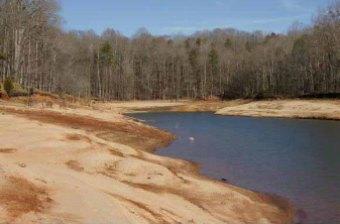
Section Branding
Header Content
Dry Weather for Eastern Georgia
Primary Content

Parts of eastern Georgia have crept closer to drought again this summer but the conditions are less extreme than in previous years.
Northeast Georgia, as well as the Augusta and Athens areas, are experiencing abnormally dry weather after those regions had rainfall totals below normal this summer.
The dry conditions hurt some pasture land.
But the rest of Georgia is faring well when it comes to rainfall. Crops in southern and middle Georgia are getting the water they need so far.
Fall is typically the driest part of the year, but the El Niño weather system will likely bring more rain in the winter months, according to David Stooksbury, the state climatologist.
But remnants of the last drought in Georgia, a long one that ended in June, are still visible.
Lake Lanier, near Atlanta, and lakes along the Savannah River near Augusta are still lower than normal.
The U.S. Army Corps of Engineers about two weeks ago cut back its flows from Lake Thurmond to the minimum of 3,600 cubic feet per second in an effort to retain water there.
The lake never reached its full summer pool this year.
Tags: Georgia, Augusta, Athens, agriculture, dry, drought, water, Lake Lanier, Lake Hartwell, Savannah River, U.S. Army Corps of Engineers, abnormally dry, northeast Georgia, northeast, drought monitor, crops, pasture, David Stooksbury, state climatologist, Georgia climatologist, Georgia state climatologist, beef cattle, cattle, middle Georgia, eastern Georgia, Lake Thurmond
Bottom Content

